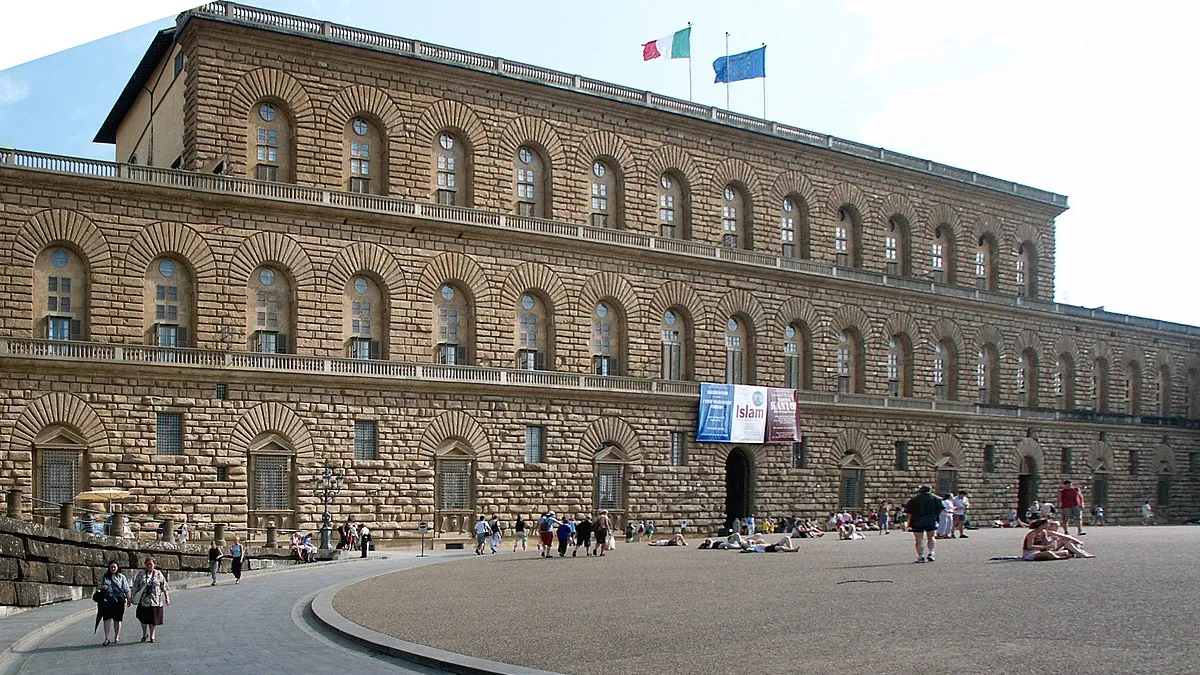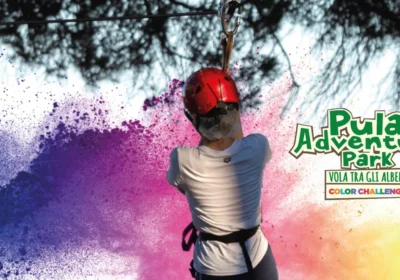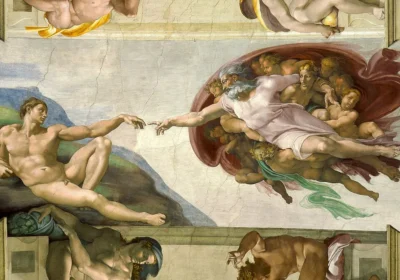Pitti Palace.
On the south bank of the Arno, not far from the Ponte Vecchio bridge, a huge building clad in rough golden stone stretches along Piazza Pitti. It is the largest Florentine palace of the XVI century, the residence of the Dukes of Tuscany and two royal dynasties – Habsburg-Lorraine and Savoy. However, the building bears the name of its first owner, the banker Luca Pitti, who wanted to surpass the luxury of Florence’s rulers.
Rumour has it that the architect’s goal was to build a building with a courtyard that would fit any Medici house. But the banker died, the family went bankrupt and Duke Cosimo bought the unfinished mansion in 1550. It is now home to several museums.
The walls of the Royal Apartments and the Palatine Gallery are hung with paintings by the great Renaissance masters. Among the 500 canvases are 11 by Raphael Santi (the largest collection in the world), 13 by Titian, many by Van Dyck, Rubens, Murillo, Botticelli, Tintoretto, Velázquez, Caravaggio and Rubens. The luxurious interiors are furnished with magnificent furniture and handmade vases.
The Gallery of Modern Art exhibits paintings and sculptures in styles ranging from neoclassicism and romanticism of the late 18th century to decadence, symbolism and post-impressionism of the first decades of the 20th century. The exhibition includes works by Hayes, Lega, Signorini, Fattori, Pissarro, Boldini, Magelli.
The paintings of Florentine masters, painted in bright coloured spots, are quite unusual. The artists themselves called themselves “Macchiaioli” from the Italian word macchia, meaning spot.
In the Silver Museum you can see vases and statues made of semi-precious stones, rock crystals, amber and ivory, ancient Roman amphorae, a collection of vessels from the Sassanid Empire in Iran. The silver model of the Piazza della Signoria, decorated with precious stones, is magnificent.
The collection of the Fashion Museum began to be assembled in the 16th century, and today it contains 6,000 pieces of dresses, suits, fashion accessories, underwear, jewellery and costume jewellery. The main exhibition changes every two years. The Carriage Museum displays the luxurious vehicles of kings and dukes, decorated with carvings and gilding. It is also home to their first automobiles.
The grand, simple palace and other buildings in the adjacent Boboli Garden are home to some of Florence’s richest museums.
Open all days except Mondays, 1 January, 1 May and 25 December
Beginning on 1 January, 1 May and 25 December.

















